INTRODUCTION
As expected many of our readers are gamers and professionals who are always looking for new graphics cards to equip their systems with. Obviously not everyone's willing to spend a large sum of cash for a graphics card but luckily nowadays people don't really have to since there are numerous budget-friendly models available in the market by both NVIDIA and AMD that do surprisingly well in games and professional applications alike. Our main focus recently has been on NVIDIA cards since that's what most of you have requested but since we want to be objective and also since AMD has launched quite a few models inside 2015 and we need to have both companies in our charts we decided to take a look at one. So today with us we have one of the latest AMD models launched by MSI and more specifically the Radeon R9 380 Gaming 2G.
As a technology pioneer, MSI takes customer satisfaction as the momentum and the pioneering R&D staff as the root to market its global presence over 120 countries. A complete line-up of notebook PCs, All-in-One PCs, motherboards, graphics cards, desktops, servers, IPCs, robotic appliances and vehicle electronics demonstrate MSI's strengths and endeavors in consumer and commercial markets. With the brand slogan of "Innovation with Style," MSI spares no effort in the pursuit of excellent quality, user-friendly design and exquisite fashion products. MSI's core values "Innovation" and "Style" have made it the leading brand beyond customer expectations. As a world leading gaming brand, MSI's aim is to become the most trusted name in gaming and eSports. We stand by our principles of breakthroughs in design, the pursuit of excellence, and technological innovation as we have continued to raise the bar for ourselves and have accomplished a great deal of pioneering work in the industry.
For the new R9 380 series of cards AMD used their latest Antigua core which is basically a slightly improved/revamped and overclocked version of the Tonga Pro core used in the older R9 285 series. So that means that the specifications of the new R9 380 cards are pretty much identical with those of the R9 285 ones since both series feature 256 Bit memory bus, GDDR5 VRAM modules, 1792 SPUs (Shader Processing Units), 32 ROPS (Render Output Units) and 112 TMUs (Texture Mapping Units). The main difference is the lower electrical requirements (always according to AMD) and the slight overclock on the core (970MHz/918MHz). The Radeon R9 380 Gaming 2G by MSI which we will be testing today features a custom PCB complete with military grade quality components, a silent dual-fan cooler they call the TWIN FROZR V and a slight factory overclock of 1000MHz (OC mode) on the core clock and 1400MHz (5600MHz effective) on its 2GB GDDR5 memory. Other features include support for DirectX 12, Vulcan, Mantle, TrueAudio, Virtual Super Resolution, Eyefinity and ZeroCore (the last two are new additions not found in the R9 285 series).
SPECIFICATIONS AND FEATURES


PACKAGING AND CONTENTS
MSI ships the R9 380 Gaming 2G inside a black and red box with a dragon drawing at the front right beneath their logo.
A few product notes are placed at the bottom in 20 languages.
The main product features are showcased at the rear right next to the specifications list.
Typically the card is placed inside a static-free bag and a large piece of black foam.
Along with the card MSI bundles a DVI to VGA adapter, software CD, gaming series catalog and a quick start guide.
THE RADEON R9 380 GAMING 2G
The black and red color combination MSI has chosen for their gaming series always impresses me and the 268mm long, 138mm tall and 40mm thick body of the R9 380 Gaming 2G is no exception.
Two 100mm thin blade fans (Torx fans) are used to throw air into the cooler (according to MSI these don't spin while the card is in idle mode).
Lately all manufacturers are using rubber covers for the PCIe connector.
A durable aluminum backplate is used not only to provide support and protection for the card but to also help cool the Samsung memory modules on the interior.
That dragon looks nice right? Well if you have a case with a side window you should be able to see it more.
MSI has fitted the R9 380 Gaming 2G with two 6pin power connectors which should be able to provide the card with roughly 225W of power.
The MSI logo placed at the top front of the card lights up red once you turn on your computer (you can disable it through their gaming software).
The R9 380 Gaming 2G features a full size DisplayPort v1.2 port, HDMI v1.4 port, DVI-I port and a DVI-D port (supports Eyefinity 2.0).
TEST BED


TESTING METHODOLOGY
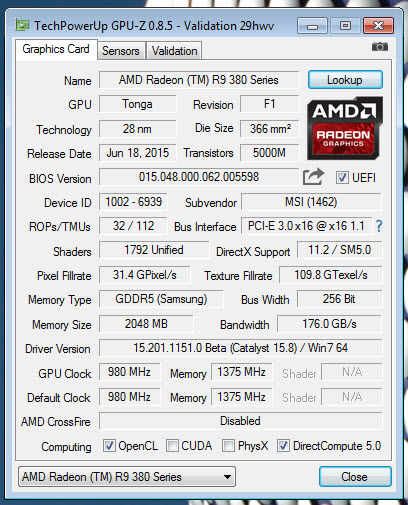
Starting from scratch is not easy so as expected our GPU database will not include models not in our procession any longer. Of course all tests were performed using the latest drivers this time over but due to time issues and also because some older models are no longer in our hands sometimes this will simply not be possible (the drivers used will always be placed next to each card). The cards tested today and currently in our database are the following ones:
Gainward GeForce GTX 650 Ti BOOST 2GB GS - ForceWare v353.30
Gainward GeForce GTX 670 Phantom 2GB - ForceWare v353.30
ASUS GeForce GTX 960 Strix 2GB - ForceWare v353.30
MSI GeForce GTX 960 Gaming 2GB - ForceWare v353.30
EVGA GeForce GTX 970 FTW ACX 2.0 4GB - ForceWare 353.30
ASUS Radeon R9 280X DirectCU II 3GB - Catalyst 15.6 Beta
GIGABYTE GeForce GTX 970 WindForce 3X OC 4GB – ForceWare v353.30
Inno3D GeForce GTX 980 iChill Ultra 4GB – ForceWare v353.30
MSI Radeon R9 380 Gaming 2G – Catalyst 15.8 Beta
Once again the screen used for all the benchmarks is our primary NEC 30" 3090WQXi LCD with a maximum resolution of 2560x1600. However we decided to change things to make it easier for us to perform tests so our testing methodology now includes a total of 5 games benchmarked in two different resolutions (2560X1600 and 1920X1200) and with all quality settings set to maximum (AA and AF are not applicable in our tests). The 5 game titles we're currently using consist from both old ones we've used in the past and new ones including Alien Isolation, Bioshock Infinite, Battlefield 4, Metro Last Light and RYSE Son Of Rome (all games are updated to their latest versions). All tests are repeated a total of 6 times and in a fresh Windows 7 Ultimate Service Pack 1 installation. Room temperature is as usual controlled and steady at 23 degrees Celsius for all tests and to record the temperatures of the cards we used AIDA64 (former Everest Ultimate by Lavalys) and GPU-Z. Recording noise levels is done with an ExTech HD600 dBA meter from a distance of no more than 5-10cm away while power consumption is measured using both with a voltmeter and an amperometer (GPU-Z sometimes comes in handy in this as well).
TEST RESULTS – ALIEN ISOLATION
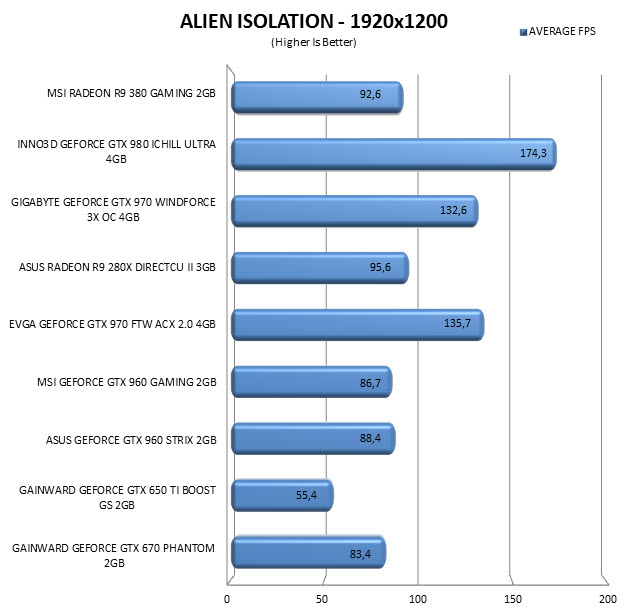
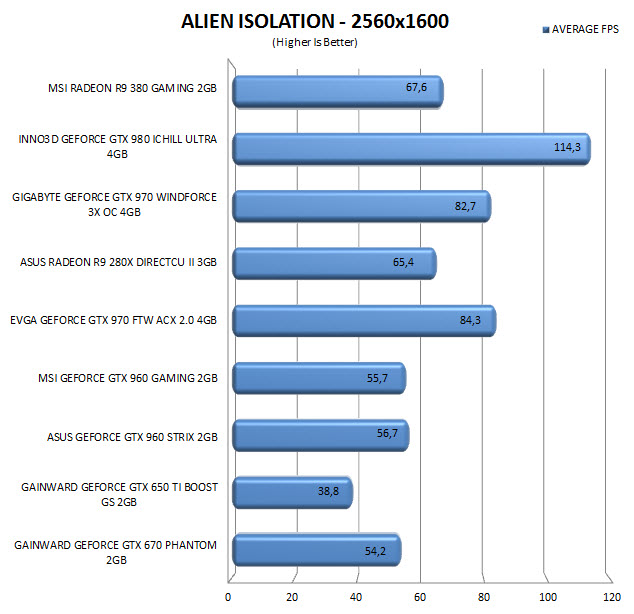
TEST RESULTS – RYSE SON OF ROME
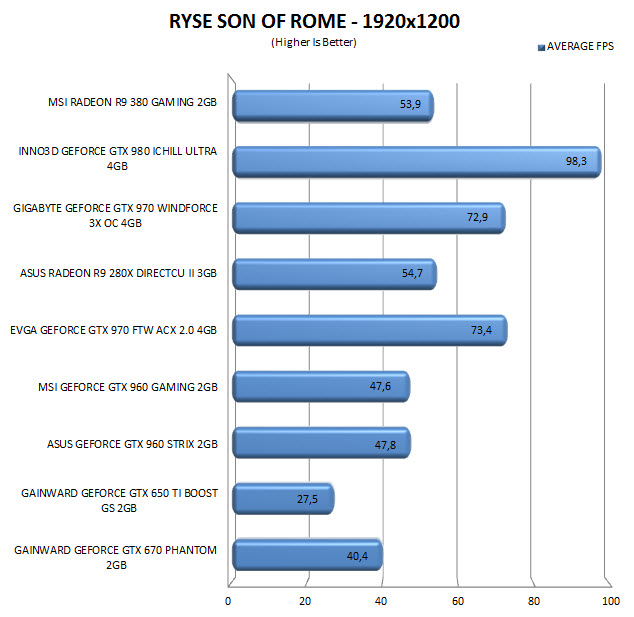
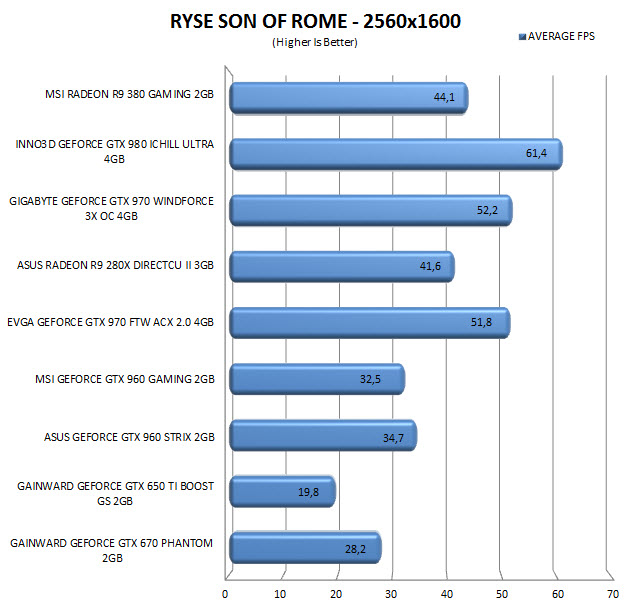
TEST RESULTS – BATTLEFIELD 4
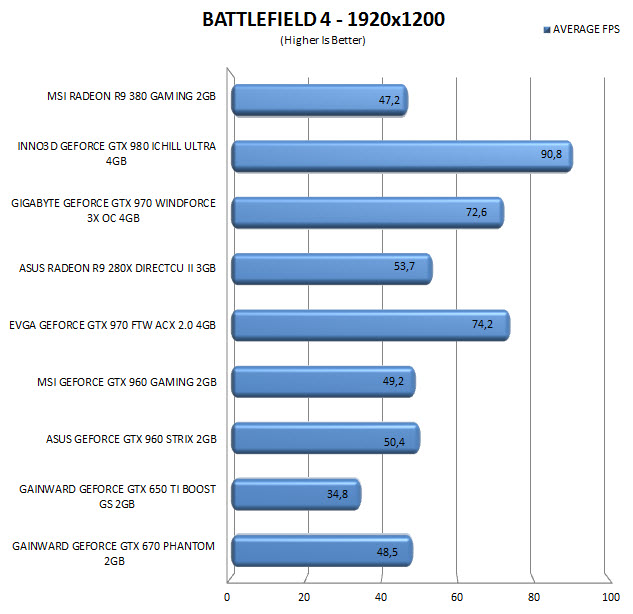
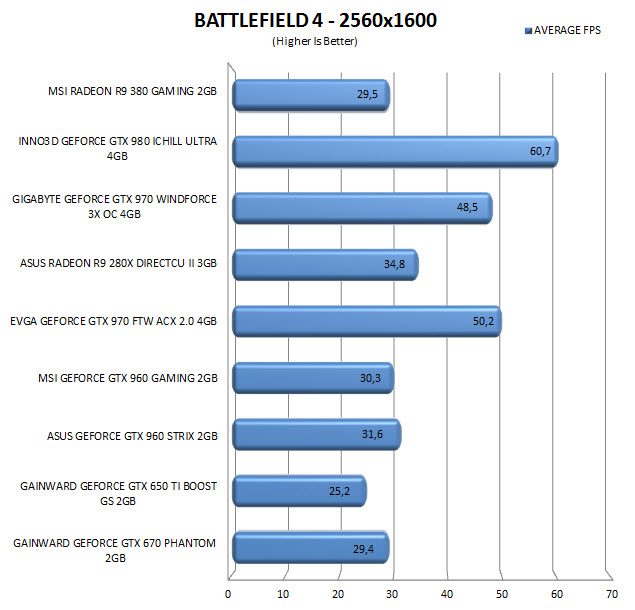
TEST RESULTS – BIOSHOCK INFINITE
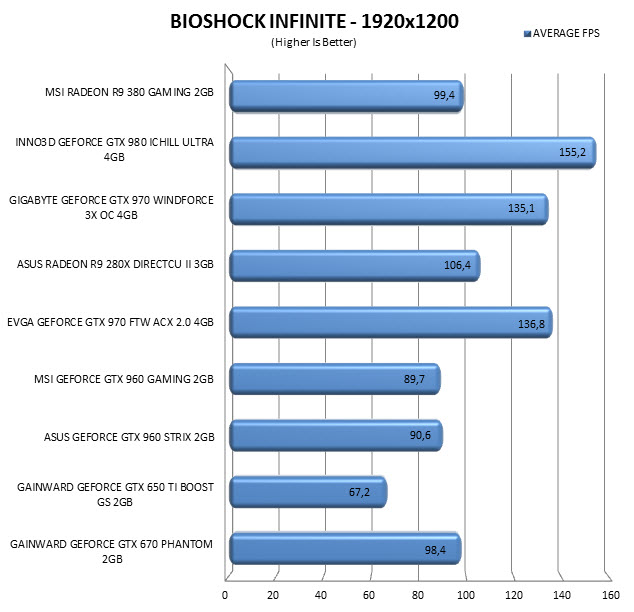
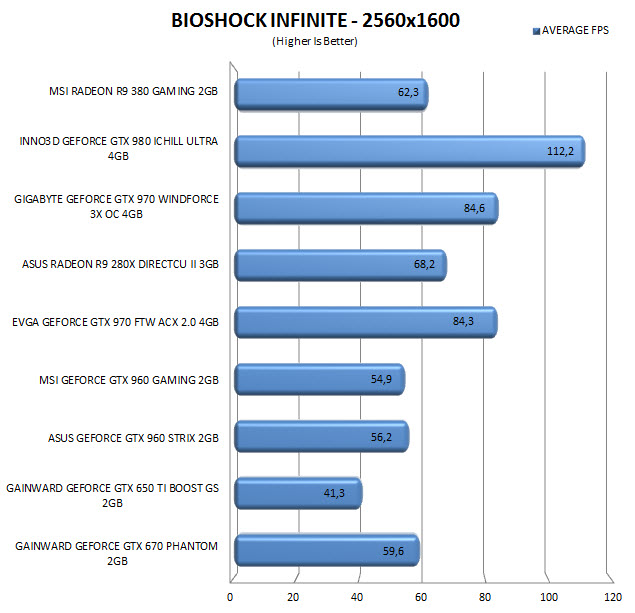
TEST RESULTS – METRO LAST LIGHT
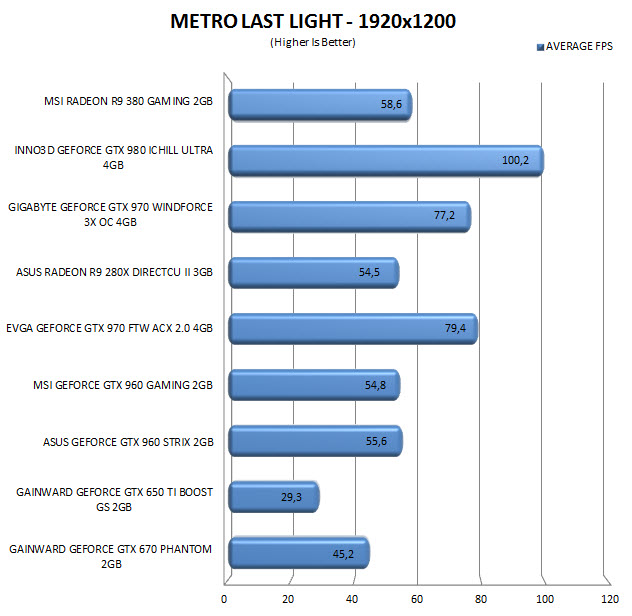
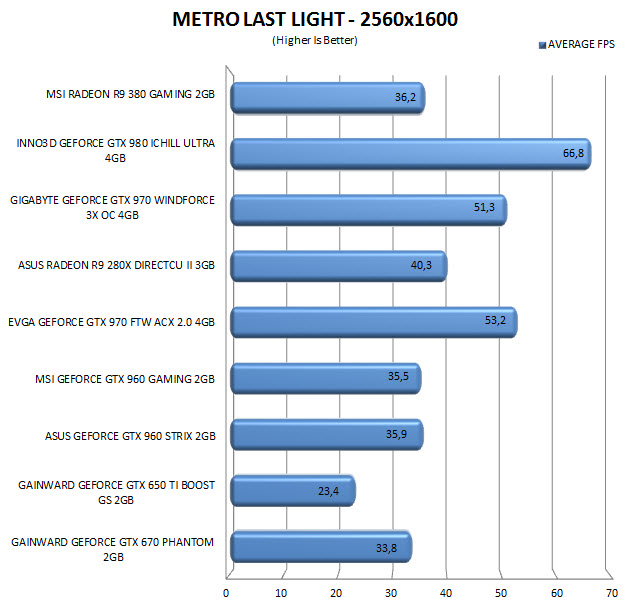
TEST RESULTS – POWER CONSUMPTION / NOISE LEVELS / TEMPERATURES



TEST RESULTS – OVERCLOCKING
Many seem to believe that the R9 380 is not a good overclocker and although that’s partially true we did manage to squeeze 120MHz more on the core (compared to the OC mode) and 125MHz on the memory modules (6000MHz effective). Not bad right?
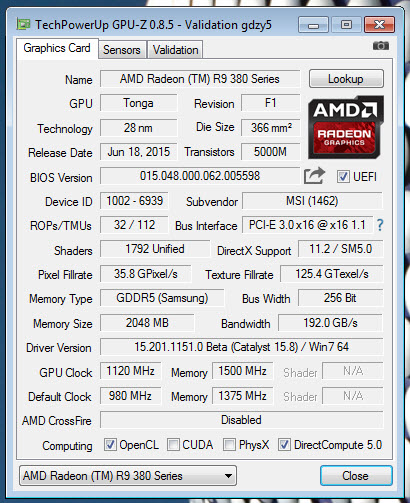
Of course we retested the card to see what kind of improvement you can expect if you OC it as much (and also what you can expect in terms of temperatures).

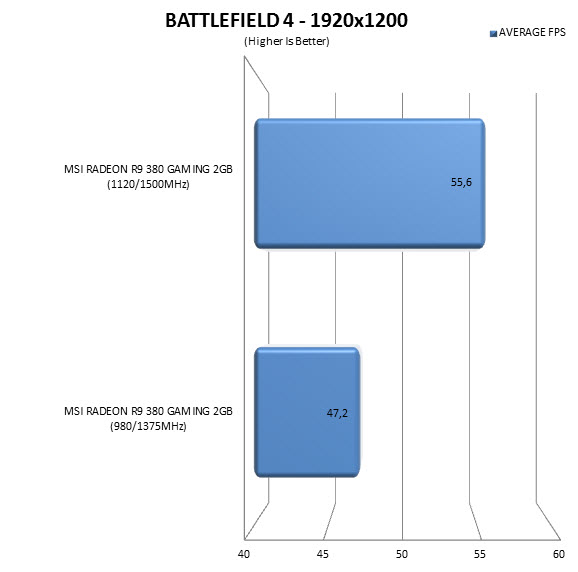
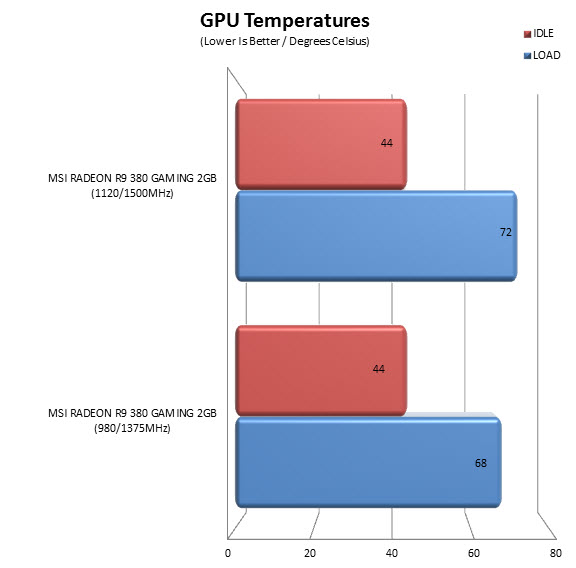
Our OC resulted in roughly a 14% boost in Alien Isolation and almost a 17% boost in Battlefield 4 (temperatures increased 5 degrees under load).
CONCLUSION
I never had the chance to play around with the Radeon R9 285 cards so I don’t know exactly what kind of performance they offer but the R9 380 Gaming 2G by MSI was a surprise since we feel that it’s the best graphics card money can buy at around the USD200/200Euros price point (I honestly was expecting the GeForce GTX 960 to be faster but as you can see it’s not). Of course if you plan on playing in resolutions of 1920x1200 and over then this card might not be the best choice since although it does ok now in a year things will probably not look so well (the 4GB variant however should boost performance a bit on high resolutions). Performance may be quite good for such a card but when it comes to power consumption the R9 380 Gaming 2G disappoints since it consumers more even compared to a much more powerful graphics card like the GeForce GTX 980. On the bright side temperatures and noise levels are much better than we had hoped although we did notice the fan of the cooler spinning even while idle (still it was inaudible).
After a few months in the market the price of the MSI Radeon R9 380 Gaming 2G has dropped a bit and so currently you can find it for just USD208.98 inside the USA (Amazon.com) and for 218Euros inside the EU (Amazon.co.uk). Needless to say you can opt for the reference model if you wish to save some money but I see very little point for that since the MSI solution is prettier and offers military grade components, improved cooling, low noise levels and factory OC. Bottom line casual gamers who place performance only second to price need not think things much since the MSI Radeon R9 380 Gaming 2G is the obvious choice and that’s why it gets our Golden Award.
 PROS
PROS
- Build Quality
- Performance
- Noise Levels
- Design
- Temperatures
- Military Grade Components
- Factory OC / OC Headroom
- Price (For Some)
CONS
- Power Consumption
- Memory OC Headroom

 O-Sense
O-Sense





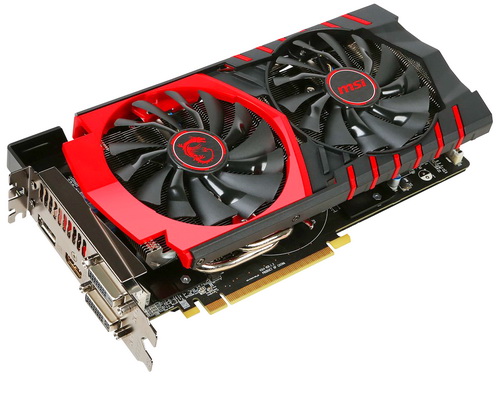

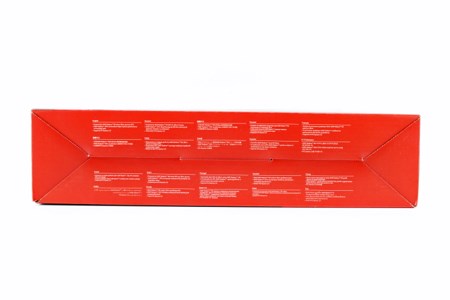
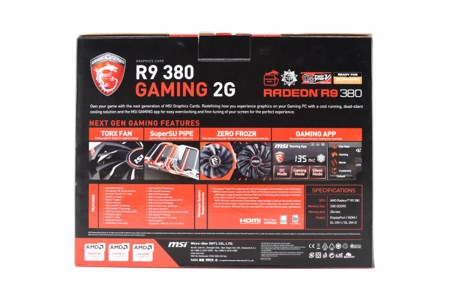
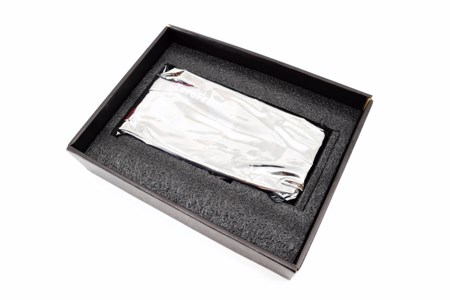
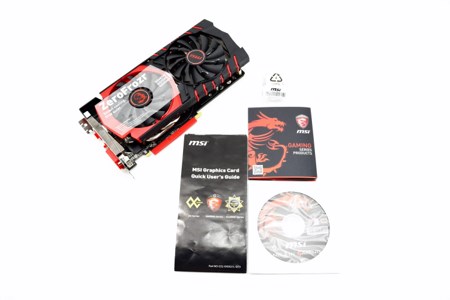

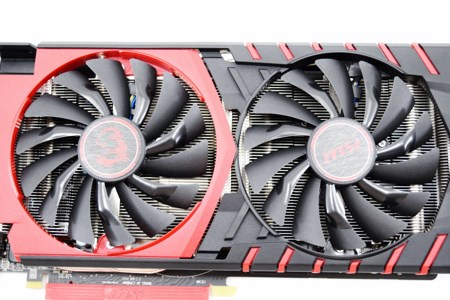
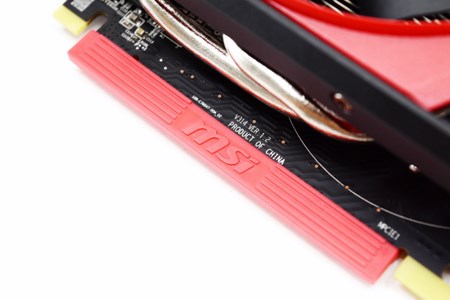
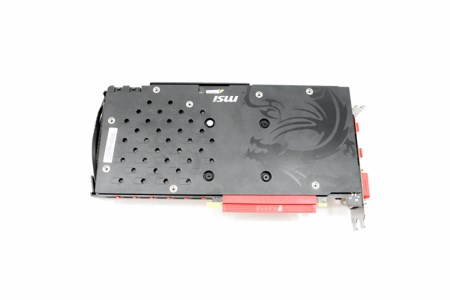

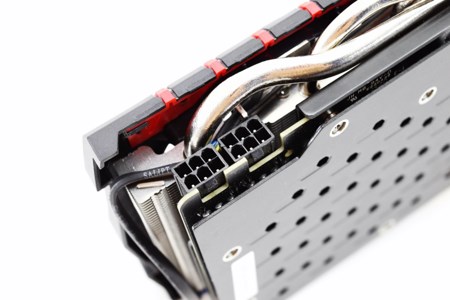
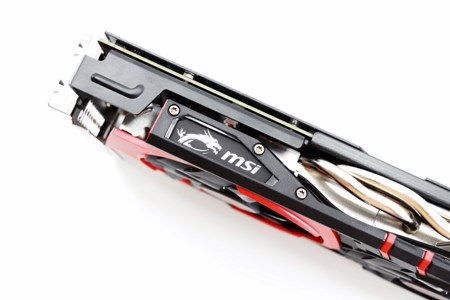




.png)

